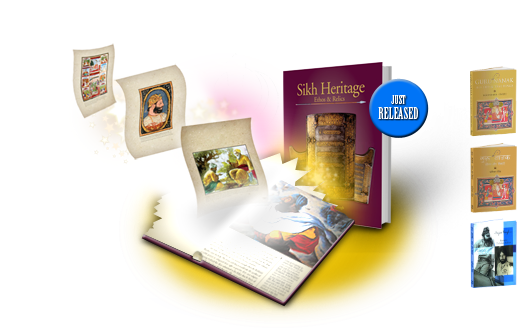In Search of Roots: Guru Amar Das and Bhallas
By A. S. Bhalla. Rupa. Pages 336. Rs 595.
Review by Roopinder Singh
ALEX Haley, the author of the bestselling book Roots, put it succinctly when he said: “In all of us there is a hunger, marrow-deep, to know our heritage, to know who we are and where we came from.” In India, we too have a long history of an oral tradition that has captured the glories, often rose tainted, of family histories of people with means.

A. S. Bhalla takes his last name seriously. The sub-title of the book links it to the third Guru of the Sikhs, Guru Amar Das, who was Bhalla, as were his three brothers. In the preface, the author narrates how he went on a genealogical quest that took him through various works, both ancient and modern. He has studied a number of sources including gazetteers of the Government of India that date back to the times of the British colonial rule and contemporary information gleaned from the Internet. Indeed, the bibliography reveals an impressive list of sources, and a perusal of the book shows how extensively the author has quoted from them.
Guru Angad chose Guru Amar Das to be his successor because of his piety and devotion. The Bhallas who use Bawa in their name, generally as a prefix, are those who trace their ancestry to the third Guru. Not all Bhallas are Sikhs; many are Hindus.
Guru Amar Das is notable in the way in which he further strengthened the institution of sangat and langar. He was also emphatic in asserting the right of women and worked hard for their emancipation.
The section Lodhis, Mughals and the Gurus serves to provide historical background and set the scene. As the author gives a brief account, he often seeks the written empirical fact, so beloved of the historian, often in vain since much of what is available on the period is based on oral tradition. Here, the author’s dependence on English sources is evident. The vast body of work that has been done on this period in Punjabi would have enriched the narrative.
In the section Caste, Education and Women, the author comes to the present. The Sikh religion emphatically rejected the caste system. The Gurus rejected both the varna and caste distinctions, although the influence of caste is an extant reality that has defied passage of time. Genealogical studies like this, however, tend to be caste-centric, and thus, a fair amount of attention has been devoted to the origins of various castes.
Bhalla women too have achieved prominence. Anita Bhalla heads a division of the BBC, Sangeeta Bhalla is an administrator at the Indira Gandhi Institute of Aeronautics, New Delhi, and Gay Bhalla is a prominent American artist. However, no one can hold a candle to Bibi Bhani, Guru Amar Das’s daughter who married Jetha, who later became Guru Ram Das. Bibi Bhani played a significant role in the building of Goindwal Sahib, the city her father founded.
Educational qualifications among the Bhallas, men and women married to Bhallas have been tabulated on the basis of a questionnaire and are both presented in charts as well as analysed. The writer has used many sources to amass considerable data that reflects that, on the whole, Bhalls are a well-educated lot. As expected, they have done well in professions as diverse as the Army, medicine and judiciary and business.
Bhallas primarily are settled in Goindwal Sahib, Ferozepur, Hoti Mardan (NWFP), Sri Hargobindpur and Jalandhar; we find as we read the third section, Places and People. There are references to the families and detailed family trees, with biographical notes. The author has also taken pains to trace out various streams in the Indian diaspora, especially in Kenya, Canada, the US and the UK, where significant numbers are to be found.
This book will be of significance to Bhallas everywhere, and to those who are interested in them. The author’s academic style, the extensive referencing, index, glossary and bibliography reflect the seriousness of the endeavour, and while the book is not a racy read, say like Haley’s bestseller was, it also reflects a basic instinct of people displaced from their place of origin—to look for their roots.
The review was published in The Tribune on September 20, 2009



